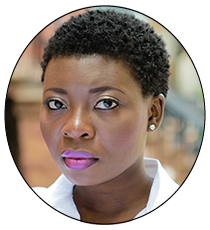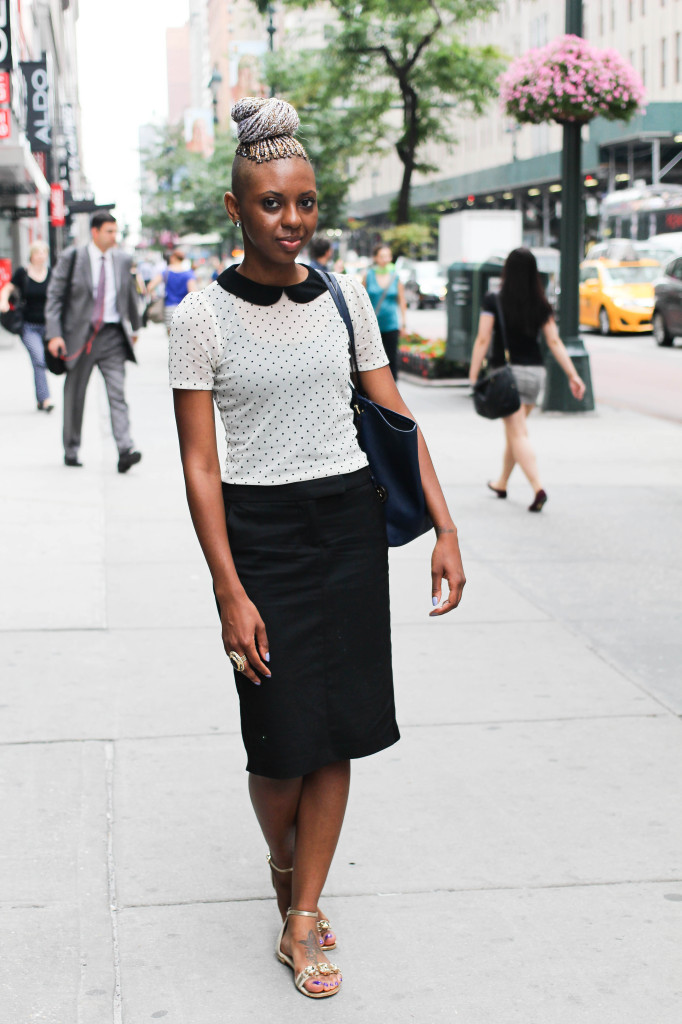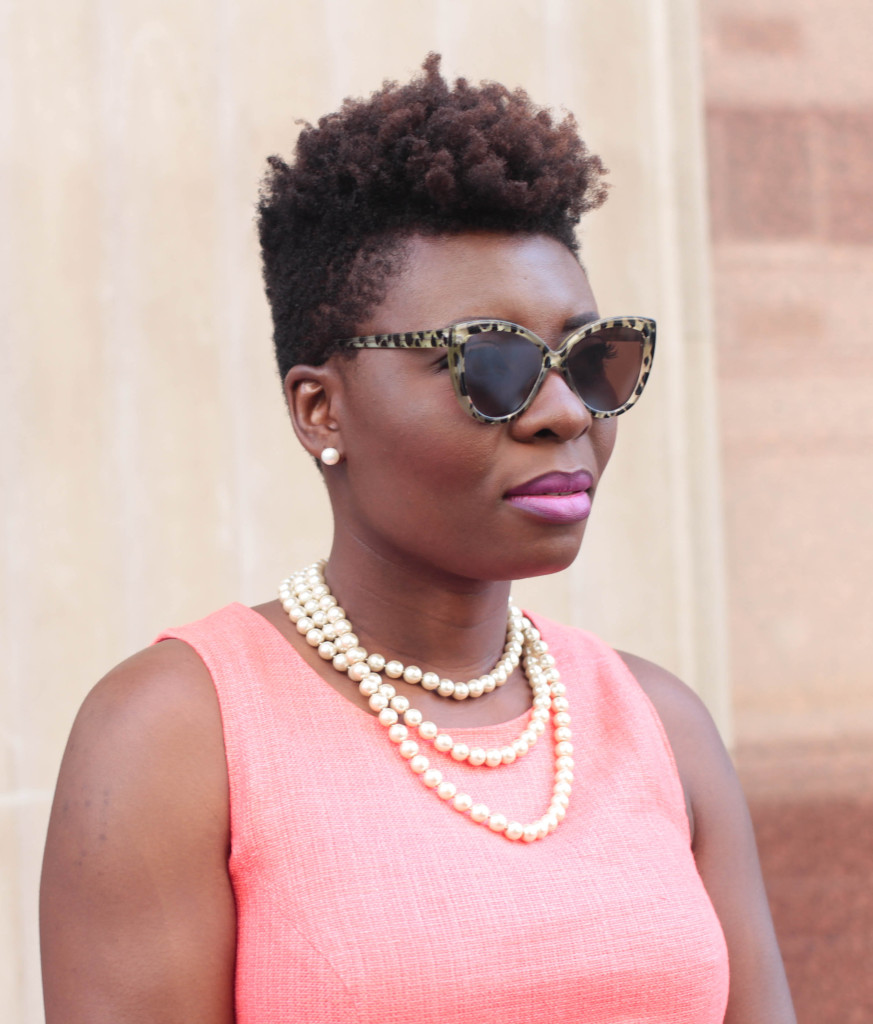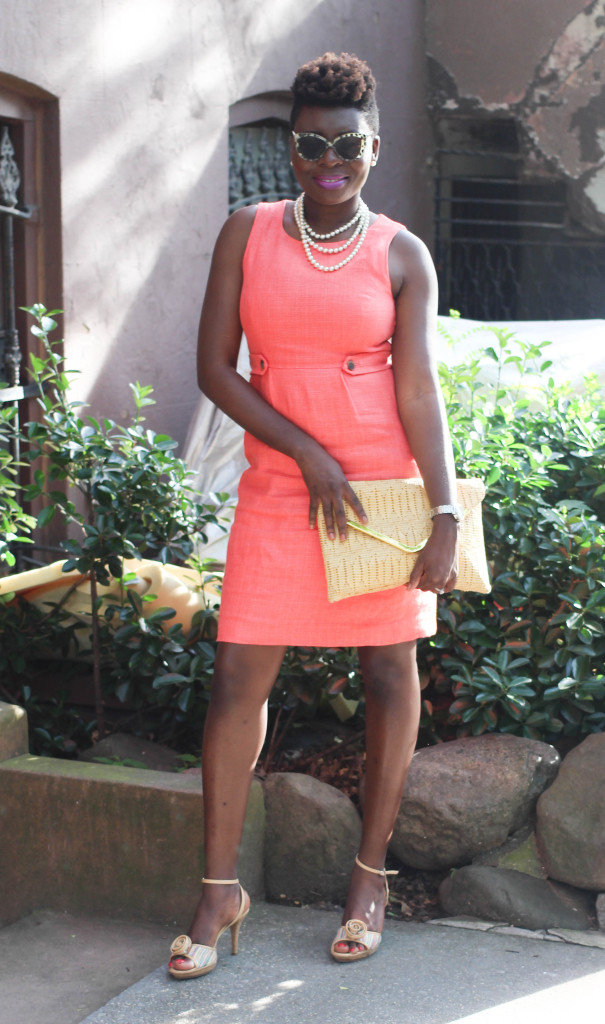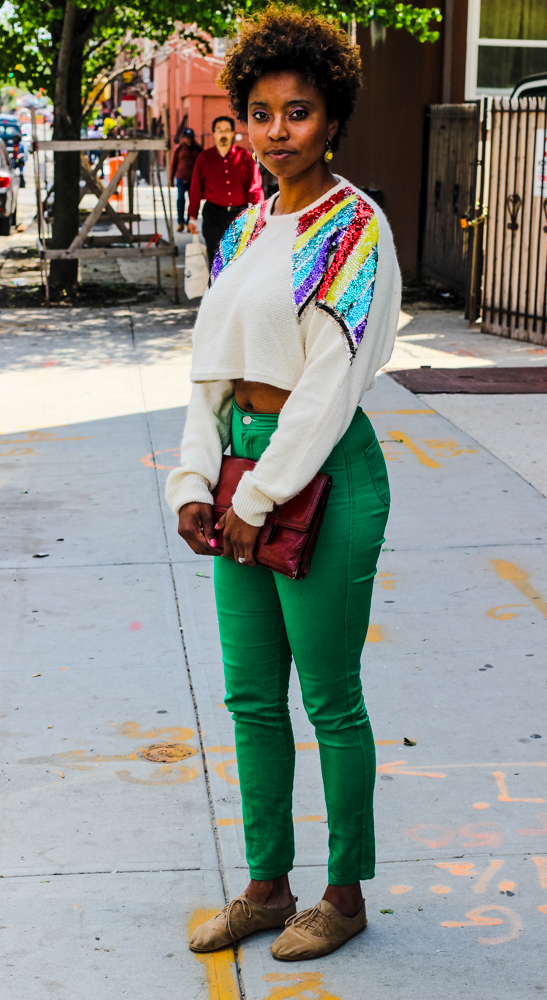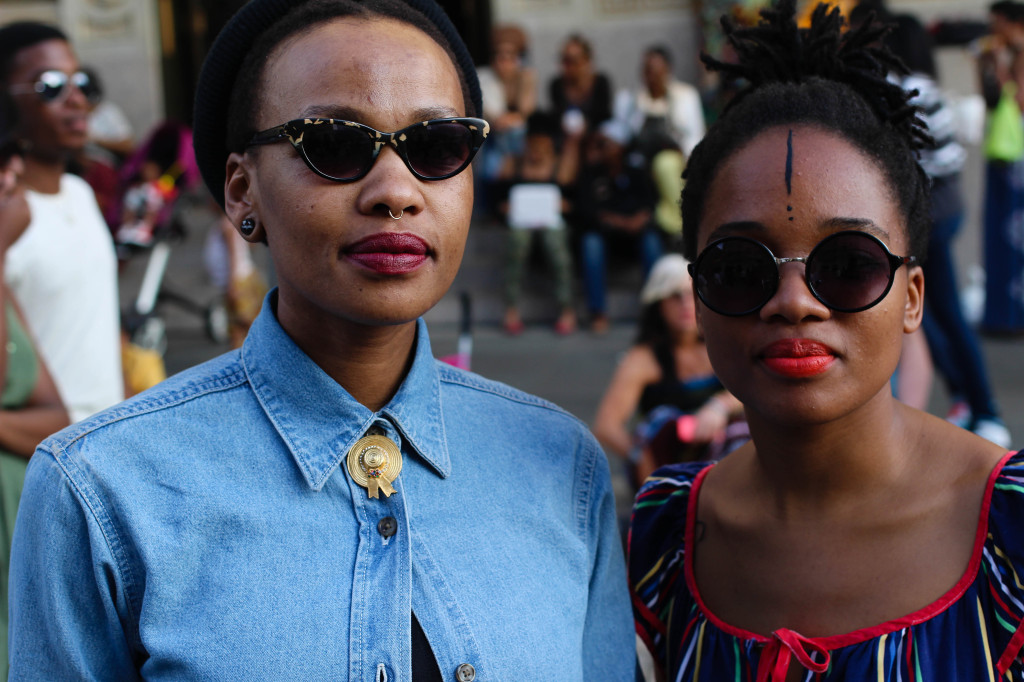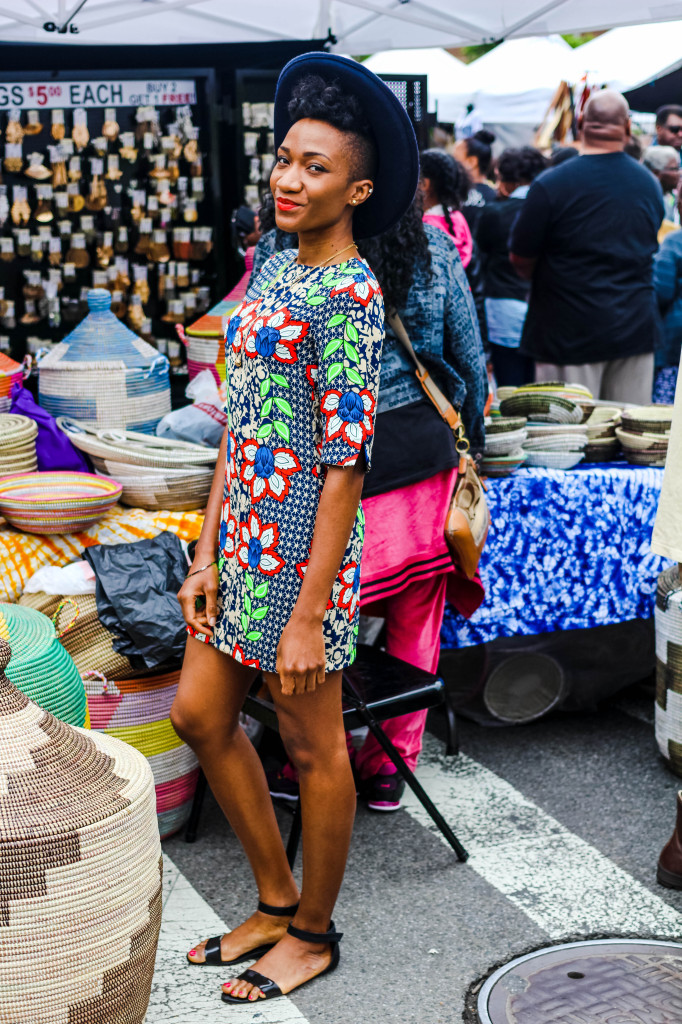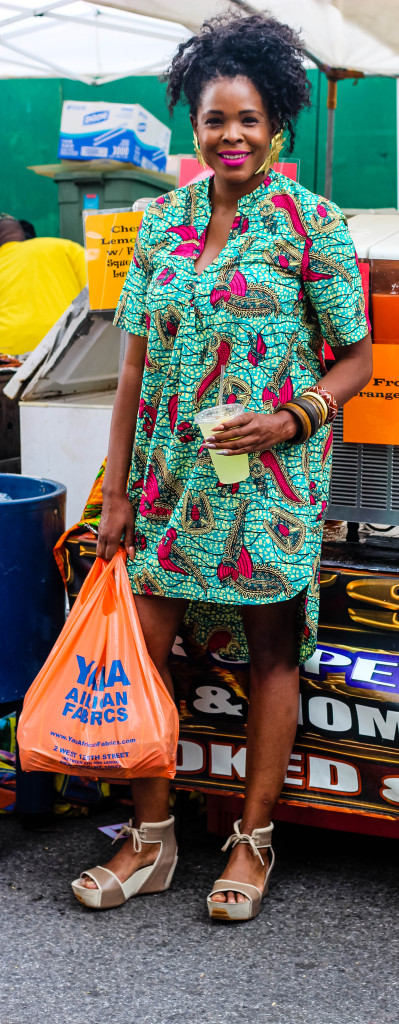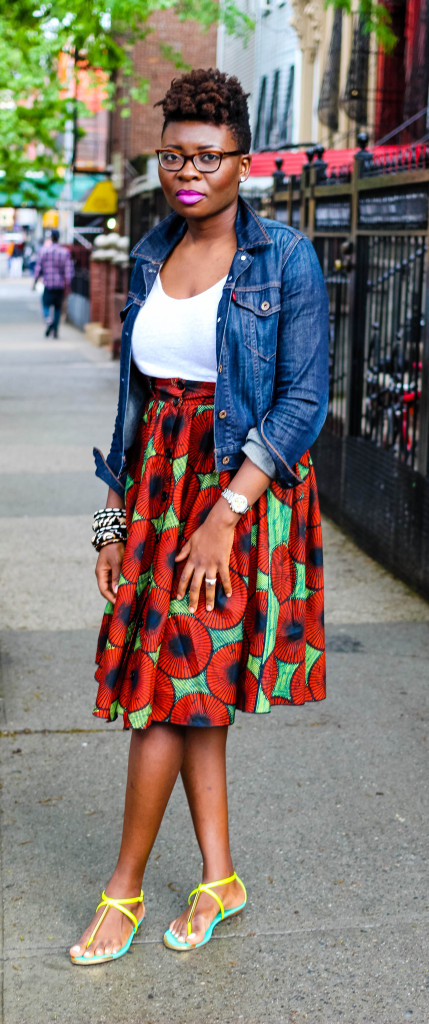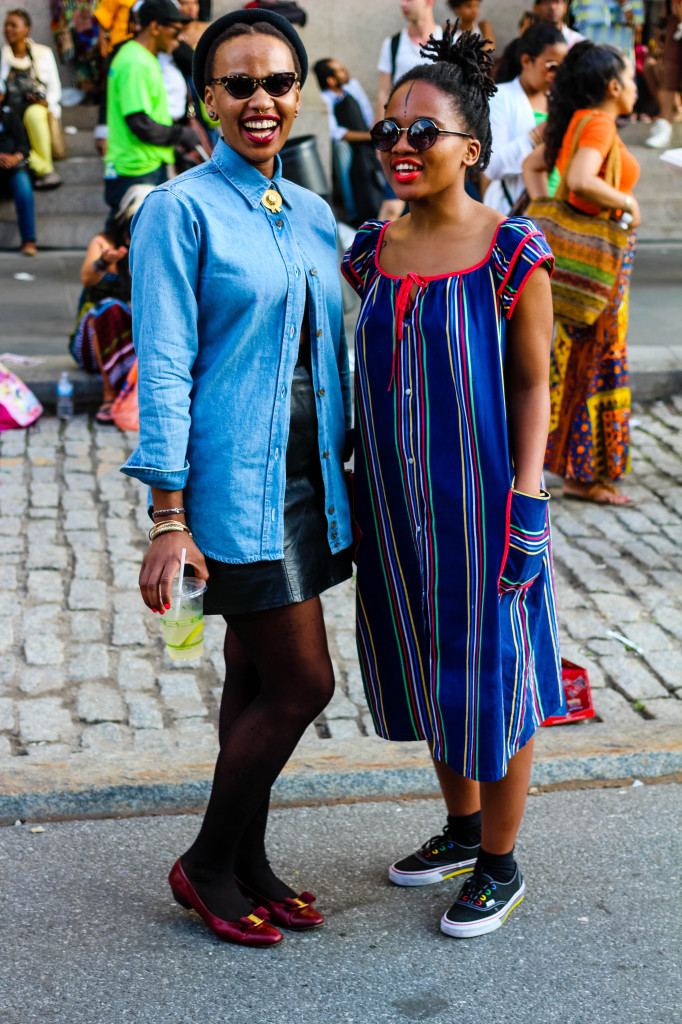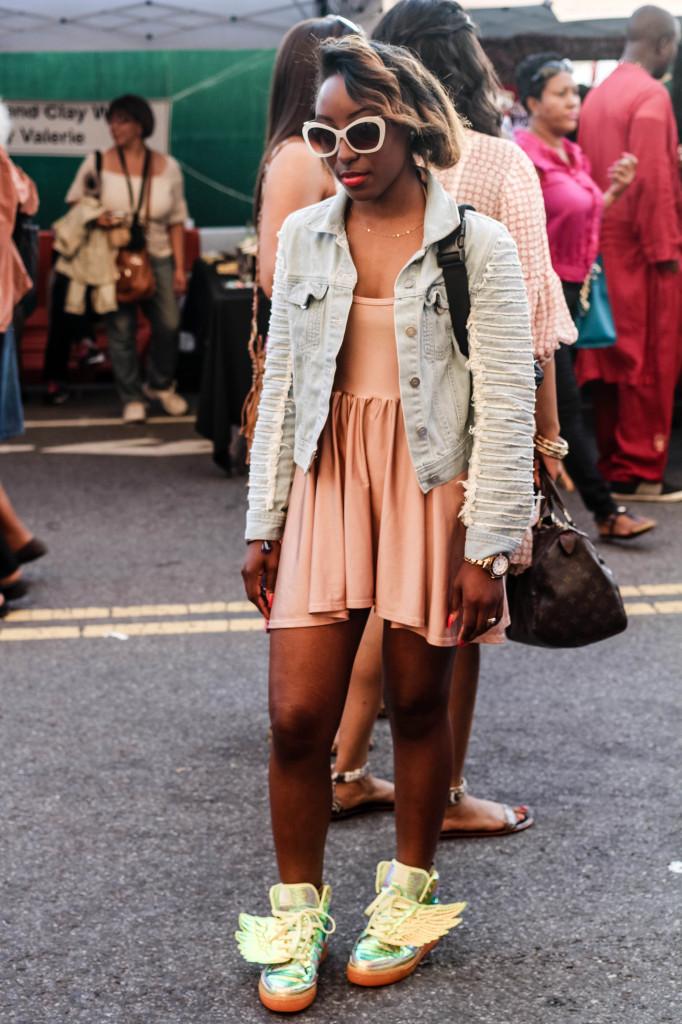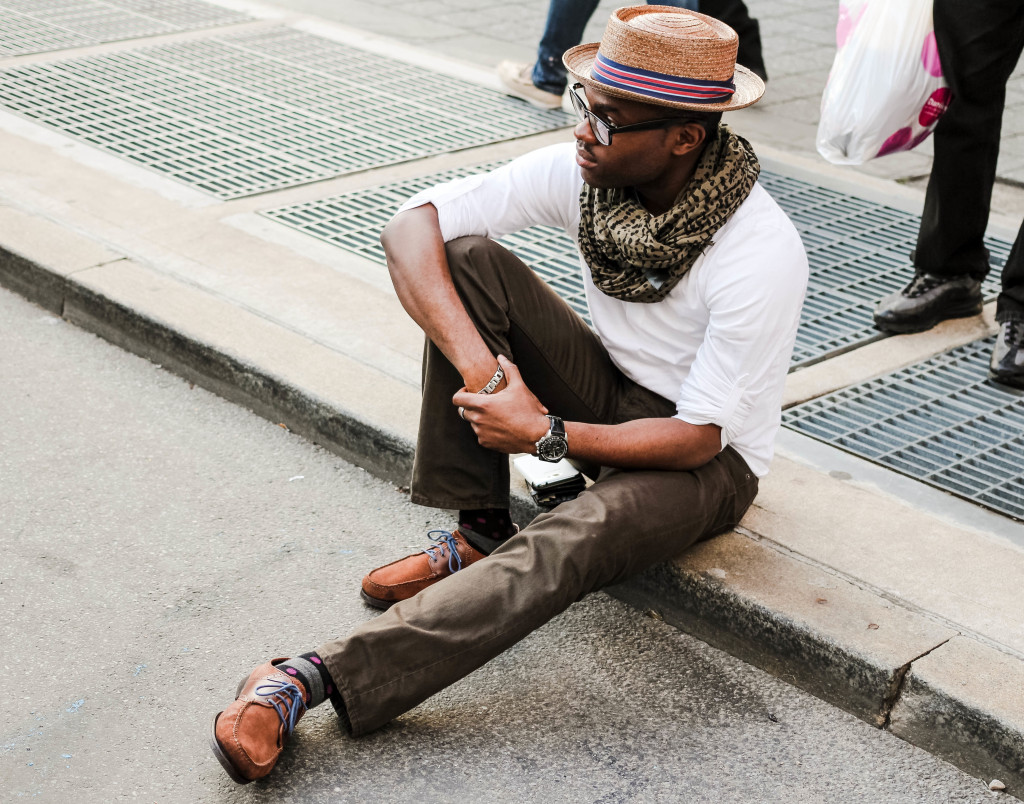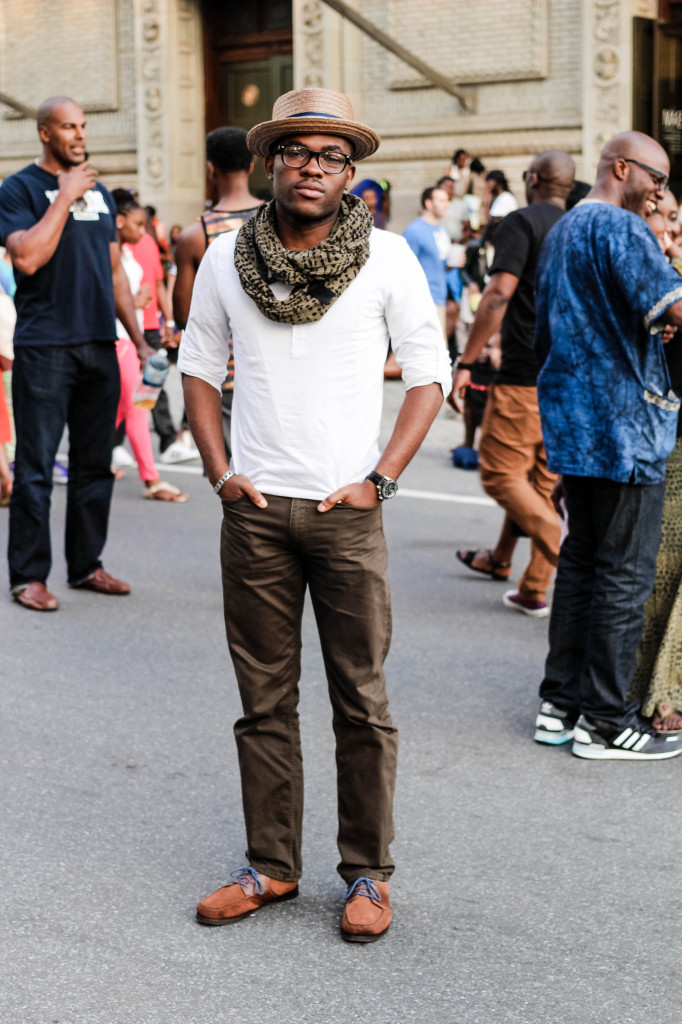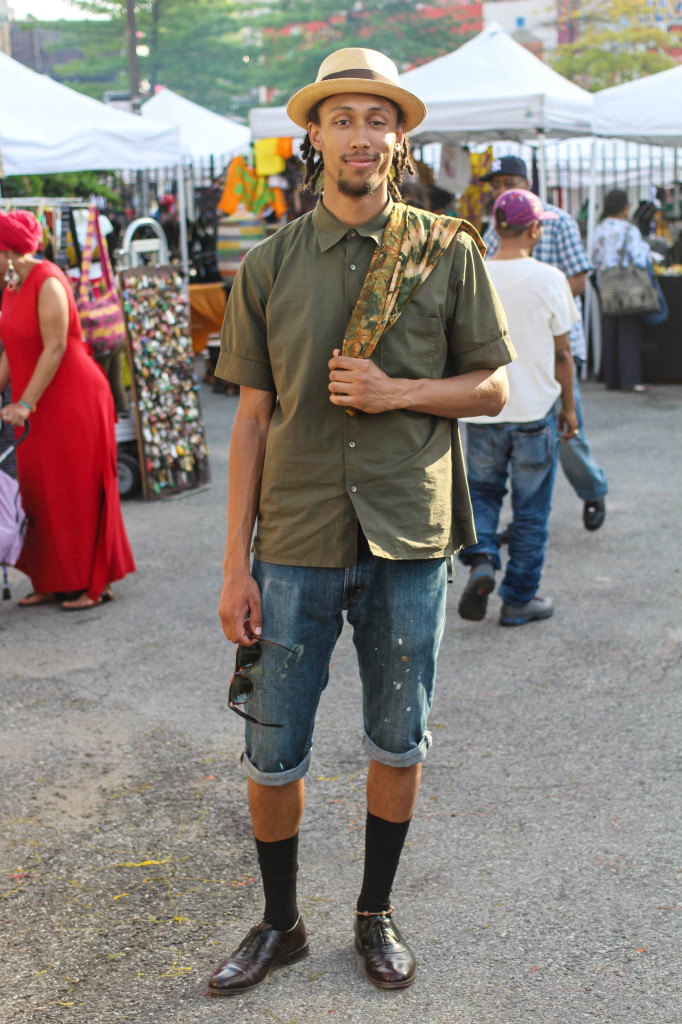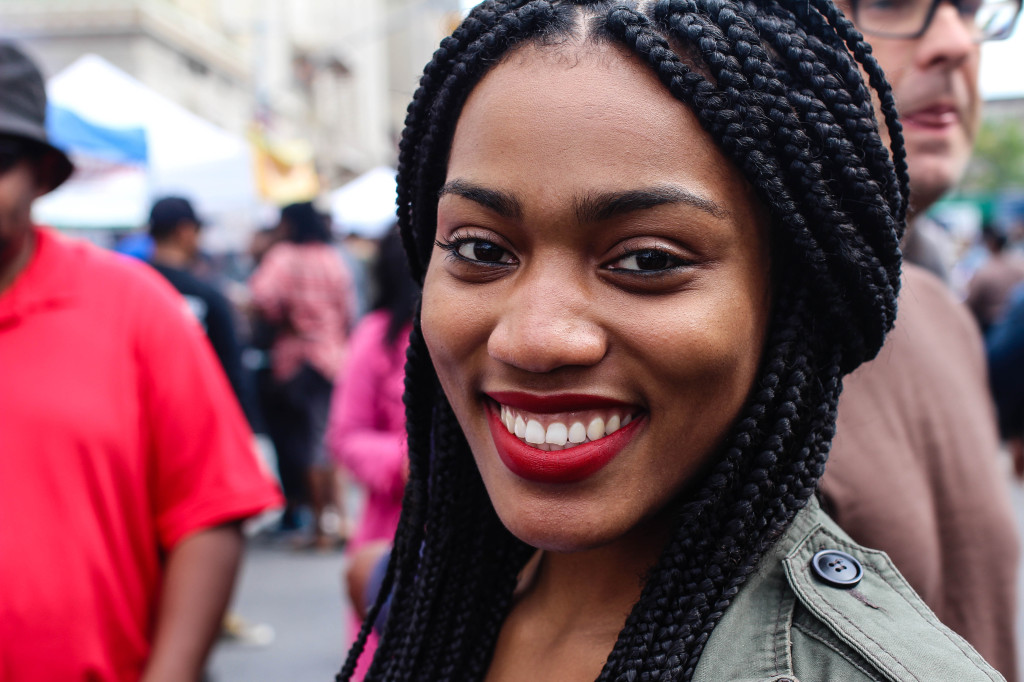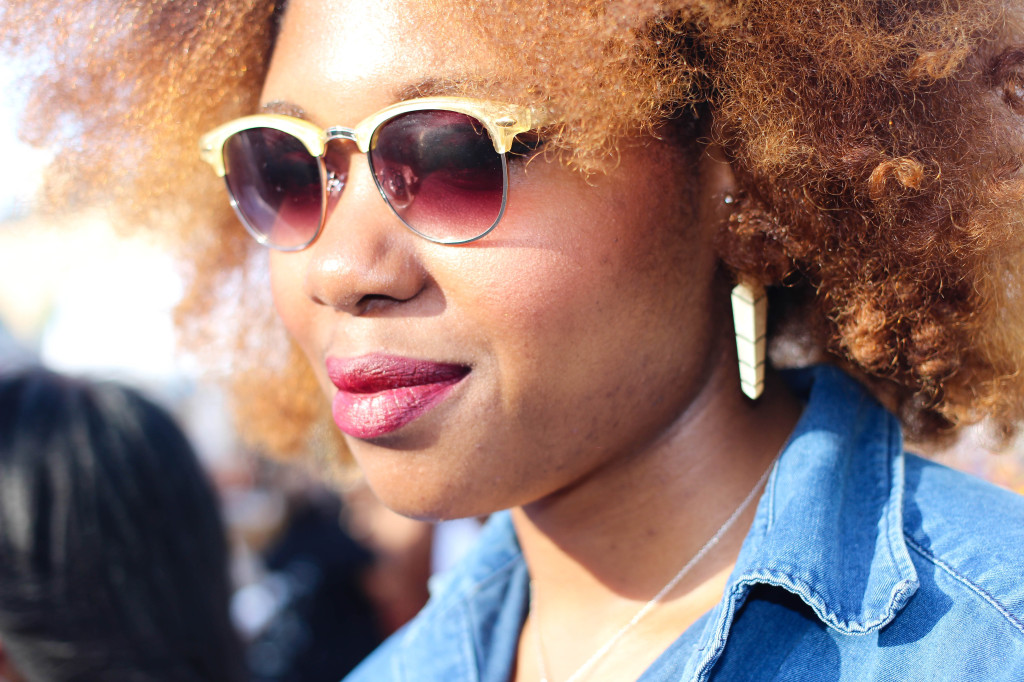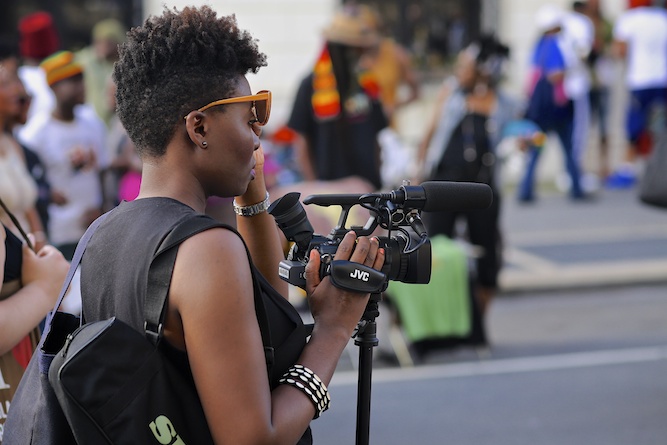“Less classically beautiful.” Those were the three words a New York Times reviewer used to describe Viola Davis, one of the most talented black actresses of our time. Davis who stars in ABC’s newest drama, “How To Get Away With Murder,” which premiered last night, plays a law professor who is smart, quick-witted, sexy, and strong. Despite Davis’ amazing performance, based on her looks, the New York Times seems to be baffled by the idea that she even got the role.
I woke up this morning and watched a clip of the interview Davis did on the View yesterday in which she addressed the New York Time’s irresponsible reference. To sum it up, Davis says:
“I’m glad that Shonda Rhimes saw me. That’s what makes her a visionary. That’s what makes her special. That’s why she’s iconic.”
“I think that beauty is subjective. I’ve heard that statement (less classically beautiful) my entire life, Being a dark-skinned Black woman. You hear it from the time you come out of the womb. And “classically not beautiful” is a fancy term of saying ugly, and denouncing you, and erasing you. Now, it worked when I was younger. It no longer works for me now.”
She continues,
It’s about teaching a culture how to treat you. Because at the end of the day, you define you.”
What more can be said after that? The New York Times article was yet another reminder of what so many black women face based on society’s bogus run-of-the-mill beauty standards. It’s an honor to have Viola Davis as our voice and representation. It is my hope that Davis’ words will inspire young dark skinned girls who dare to dream of one day becoming an actress or pursue any other craft typically based on beauty. Let us all be aware that the lie we’ve been told about being “Less classically beautiful” will have little affect what we can achieve, so long as they define our own beauty.
 The cosmetics industry has long neglected to meet the needs of women of different ethnicities. As part of my New York Fashion Week video coverage, I spoke to Jodie Patterson, Co-Founder of DooBop.com about how she plans to make her business the first successful cosmetic company targeting affluent brown women. Press play for the full story!
The cosmetics industry has long neglected to meet the needs of women of different ethnicities. As part of my New York Fashion Week video coverage, I spoke to Jodie Patterson, Co-Founder of DooBop.com about how she plans to make her business the first successful cosmetic company targeting affluent brown women. Press play for the full story!
It’s #ThrowBackThursday so I’m taking a look back on my hair journey.
In 2012, Dana Oliver, the Senior Beauty Editor of the Huffington Post commissioned me to write an essay about why I decided to wear my hair natural while working as a television reporter. I was pleased to get the assignment since my career aspirations were the very reason I struggled with re-embracing my kinky hair after wearing it straight for a number of years. As I stated in the piece, there aren’t many black women sporting their natural tresses on television. So I wrote the story straight from the heart, leaving nothing out. I didn’t expect all the feedback that came afterwards. I was pleased to find out that it made the website’s front page of the beauty section. I also received several emails and tweets from other women going through similar struggles, well wishes from people who understood, and some my favorite websites and news outlet re-posted my story.
As I take a look back at my hair journey for #ThrowBackThursday, I realize how much I’ve grown since I wrote that piece. For starters, my career aspirations have evolved a great deal. I’m no longer waiting to be discovered as “on-air talent” by a major news station. I’ve made the decision to work towards cultivating a more diverse career path that honors all of my talents. Also, I don’t see my hair as this external part of myself. In other words, I’m not #teamnatural or “team” anything for that matter. I’m simply me.
Here’s an exert:
For the second time in my life, I’ve chosen to wear my hair in its natural kinky state. It was an easy decision the first time. Back in 2001, I was going through a phase of finally embracing my round face, high cheekbones and mahogany complexion. Ridding myself of my straight, chemically-processed hair typically associated with society’s standard of beauty was a way of celebrating my newfound self-love. Plus, it helped that artists like Lauryn Hill and India Arie were proudly sporting their natural tresses at the time, making it a popular trend among black women. It became the “thing” to do.
But after five years of rocking Afros, twists and braids I started relaxing my hair again. I was comfortable with my kink, but tired of all the work it took to maintain it. So, I fell back into relaxers, bone straight bobs, flat irons, wigs and extensions.
Then late last year, it happened: My hair started falling out.
Read the full story and see a photo slide show of my hair journey HERE.
“Not all African women believe black is beautiful. And that’s ok.”
When I first read that headline for an opinion piece written by Nigerian journalist, Sede Alonge for the UK Telegraph, I was ready to take to my laptop to write a heated retort.
Alonge wrote her piece in response to the backlash Kenyan model and socialite Vera Sidika received after she revealed her new look. The once brown beauty admitted that she underwent rigorous procedures to bleach her skin to a near ghost-like fair complexion. In Alonge’s op-ed regarding the matter, she argues that it’s okay for some black women to feel their blackness isn’t beautiful and that white people are also guilty for skin transformations such as tanning.
According to Alonge:
Yes, black is beautiful, but so also is white, brown, yellow and the many shades in between.
When white people use tanning lotions, solariums and other methods to darken their skin, it is treated as par for the course and other white people don’t feel the need to remind them that “white is beautiful”. In fact, such a statement would likely be regarded as racist by members of other races. Yes, I understand that there was a specific historical context in the US and elsewhere which, at the time, necessitated the use of the “black is beautiful” slogan in order to boost black people’s sense of self-worth and identity, but this is 2014 and we should have gotten beyond that by now. Or are self-affirming slogans going to be needed by black people forever?
People’s desire to have a particular skin tone, be it a darker or lighter one, stems from them wanting to be more attractive and sometimes for others to take notice. And more often than not, in the case of an individual who has undergone skin lightening here in Africa, it works. The critics might be unwilling to concede this publicly, but the harsh truth is that in Africa, lighter skinned girls do get more attention and are more appreciated than darker skinned women.
After reading Alonge’s words, I wanted to inform her that skin tanning simply doesn’t hold the same weight as colorism—a deep issue within the black community laden with racial baggage. I believe it’s the very reason bleaching agents are being sold like hot cakes among black women, especially in Africa. In Nigeria alone, 77% of women reportedly use skin lightening products according to the World Health Organization. Furthermore, even in 2014 white women are considered the standard of beauty in the western world regardless of how pale or tan they are. Therefore “self-affirming slogans” like “black is beautiful” will endure.
I also wanted to address Vera Sidika’s transformation. But as I constructed the story in my head, I realized that many of the things I wanted to say have been said time and again: That black is indeed beautiful; That we should love ourselves; That colonialism and slavery are at the root of why we’ve been conditioned to believe we are not beautiful; That a rejection of your God-given black skin is an obvious form of self-hatred; That a rejection of your dark skin is a rejection of me and women who look like me; That when women change their complexions they are indirectly telling young girls who are dark skinned that they aren’t good enough. We’ve heard it all before. We’ve read such articles; we’ve watched the documentaries.
Plainly stated, when an adult seeks to attain to a certain aesthetic, there’s likely no changing that person’s mind, and they have that right. In that regard, I agree with Alonge. So why, I asked myself, should I waste my time writing a preachy response regarding a personal decision? Maybe, instead, what I should feel is compassion for a person who changed their appearance in such a way. Afterall, it’s not easy for women to navigate in a society that puts so much weight on beauty.
The over emphasis on outer appearance makes me recall an interview Britain based Nigerian author Helen Oyeyemi did with NPR some time ago. The young novelist who’s been deemed a literary prodigy admitted that she considers herself ugly but interesting. My initial reaction was shock, but eventually I realized how important and liberating her declaration must have been. She was able to detach herself from the thing that holds many women hostage and get on with the business of being intelligent and dynamic. That courage was likely the motivation she used to write her first novel before she graduated from high school. By the time she was 19, she signed a two-book deal reportedly worth $1 million. Not many grown women boast that level of accomplishment in their chosen field.
As a mother of a young black girl, I know my purpose is to show her that she is indeed good enough—not simply because of her looks or her complexion, but because she is a divine being worthy of all that is good. I will do my job in this regard.
So rather than write preachy responses, I will work to showcase all that makes little black girls and black women beautiful regardless of their appearance. It’s one of the reasons I chose to focus on people of color for this blog. I wanted to document the fact that we are here and we deserve to be celebrated, because many of us are proud of who we are and we express that pride through all forms of unique style.
So I will no longer seek to berate a grown woman about how she feels about her blackness. There are books available if people want to know their history. There are magazines and websites that celebrate who we are. There are organizations that seek to spread the overall message. If by now responsible adults don’t know black is beautiful, there’s not much else to say to change their minds. For those of us who are aware of our greatness, let’s focus on celebrating ourselves in the presence of young black people. Instead of simply telling black youth they are beautiful, let’s begin to show them exactly why they should love who they are, aesthetic and all.
 Stephanie accentuated her all black look with a stone washed denim jacket. I love how a print of Bob Marley’s Rolling Stone cover is pinned to the back.
Stephanie accentuated her all black look with a stone washed denim jacket. I love how a print of Bob Marley’s Rolling Stone cover is pinned to the back.
The mix of hues in her braids and the style itself really stood out.
I spent Father’s Day having brunch with my amazing husband and our 10 month old daughter. So in true “Brooklyn Sunday brunch” fashion, I wore a classic bright linen sheath dress from J. Crew and a long strand of pearls that I layered up. To jazz things up, I threw on a pair of funky spotted shades.
I love this envelope clutch I got a few years ago from Asos. It’s stylish, it holds so much, and it has a classic feel.
The first time I attended the Brooklyn Academy of Music’s annual Dance Africa Street Bazaar in 2002, I remember thinking, ‘I found my second home!’ Coming from Miami that year, it was amazing to see such a large community in the United States embracing African culture and out-of-the box style.
For my readers based outside of New York who aren’t familiar with Dance Africa (or BAM as it’s often called), the academy hosts the 3-day event in the heart of Fort Greene every Memorial Day weekend. From afros and mohawks to piercings and prints, BAM is one of the truest displays of the Brooklyn bohemian.
Below are some street style photos I took at the event this year.
Stay tuned for my video coverage, which features more interesting style!
Style. Beauty. Culture. Welcome to Scripts and Sightings!
Isn’t it funny how things come full circle? For me fashion from a professional standpoint has crept its way back into my life.
Let me give you a bit of background on what I mean:
Over a decade ago I moved to New York City to pursue a career in fashion. But life took me in a different direction a few years after I graduated from The Fashion Institute of Technology.
